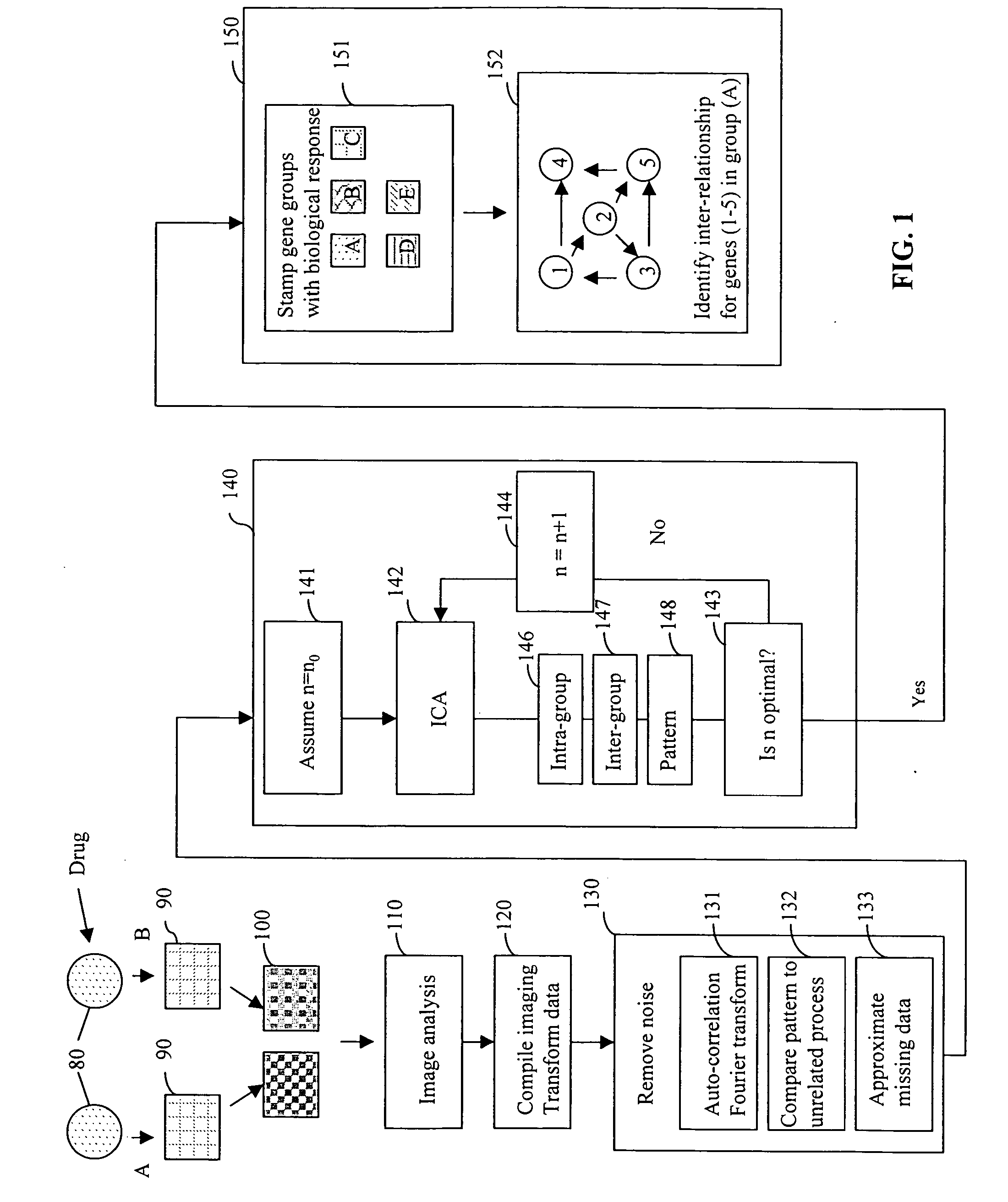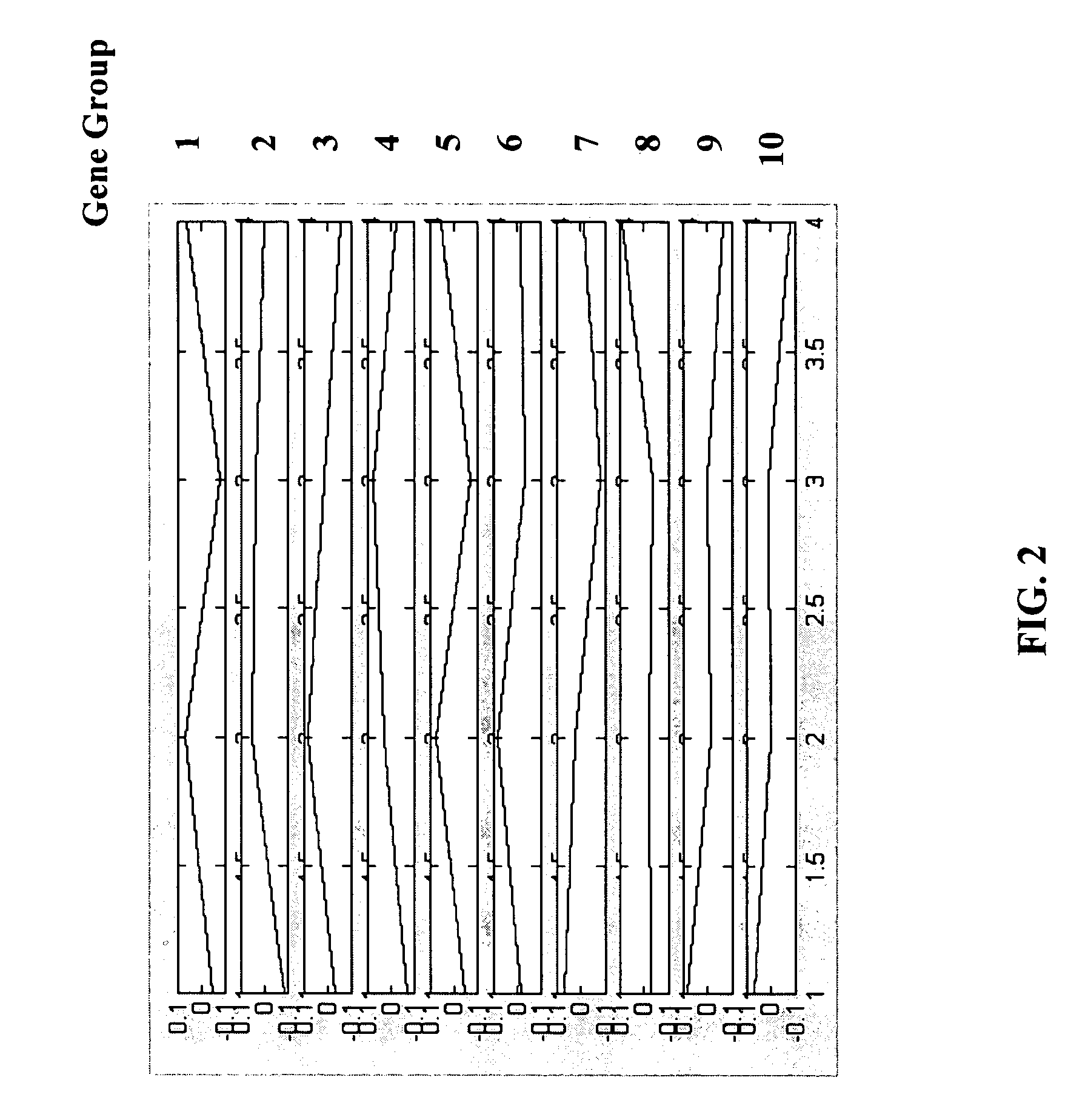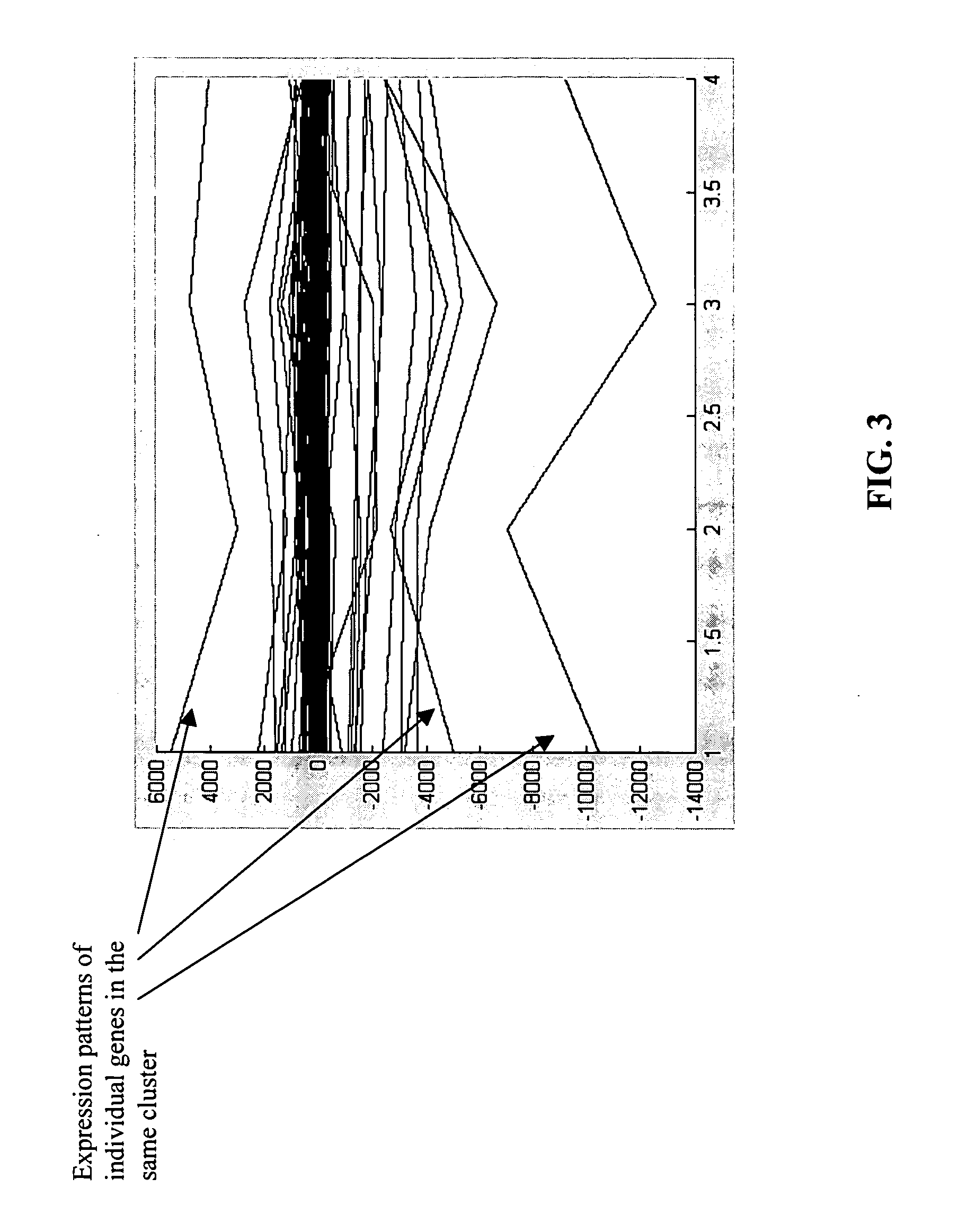Methods and systems for gene expression array analysis
a gene expression array and array analysis technology, applied in the field of gene expression analysis, can solve the problems of significant analysis challenges, no technology currently being used is completely optimized for this type of analysis, and cannot solve the problem of significant analysis challenges
- Summary
- Abstract
- Description
- Claims
- Application Information
AI Technical Summary
Problems solved by technology
Method used
Image
Examples
example 1
Measurement of Gene Expression by Array Analysis for Genes Related to Bone Healing
[0155] FastICA (available from Helsinki University of Technology) implemented in MATLAB® 6.0 (The Mathworks, Inc., Natick, Mass.) was used for the analysis of gene expression data relating to bone healing. Although not as accurate as the traditional ICA methods, FastICA provides a much faster technique when large datasets are used. The hardware was a 1 GHz AMD ATHLON PROCESSER® with 768 Mb memory. The input data was a series of four microarray measurements for the expression levels of genes of young rats during the bone fracture healing process. The data also included a starting non-fracture measurement.
[0156] The largest data set included 8,799 data points. For the removal of noise, the data from the control (the non-fracture reading) was subtracted from each subsequent data point (after fracture and during the healing process). Using a simple (i.e., non-optimized) filtering technique, series with c...
example 2
Identification of Genes within Independent Component Groups for S. Cerevisiae
[0161] In this example, microarray gene expression data of the budding yeast S. Cerevisiae was analyzed to identify the mRNA transcript levels during the cell cycle of the budding yeast S. Cerevisiae. To obtain synchronous yeast culture, cdc28-13 yeast cells were arrested in late G1 by raising the temperature to 37° C., and then reinitiating the cell cycle by shifting cells to 25° C. Cells were collected at 17 time points taken at 10 min intervals, covering nearly two cell cycles (Cho et al, Molecular Cell, 2:65-73, 1998). Genes which have been activated in each phase of cell cycle (Early G1 phase, Late G1 phase, S phase, G2 phase or M phase) have been previously identified (Cho et al., Molecular Cell, 2:65-73, 1998) based on the functionality of the genes in each phase. Thus, it is known that the genes involved in the cell cycle process can be divided into five clusters depending upon the stage in which t...
PUM
| Property | Measurement | Unit |
|---|---|---|
| temperature | aaaaa | aaaaa |
| temperature | aaaaa | aaaaa |
| time | aaaaa | aaaaa |
Abstract
Description
Claims
Application Information
 Login to View More
Login to View More - R&D
- Intellectual Property
- Life Sciences
- Materials
- Tech Scout
- Unparalleled Data Quality
- Higher Quality Content
- 60% Fewer Hallucinations
Browse by: Latest US Patents, China's latest patents, Technical Efficacy Thesaurus, Application Domain, Technology Topic, Popular Technical Reports.
© 2025 PatSnap. All rights reserved.Legal|Privacy policy|Modern Slavery Act Transparency Statement|Sitemap|About US| Contact US: help@patsnap.com



